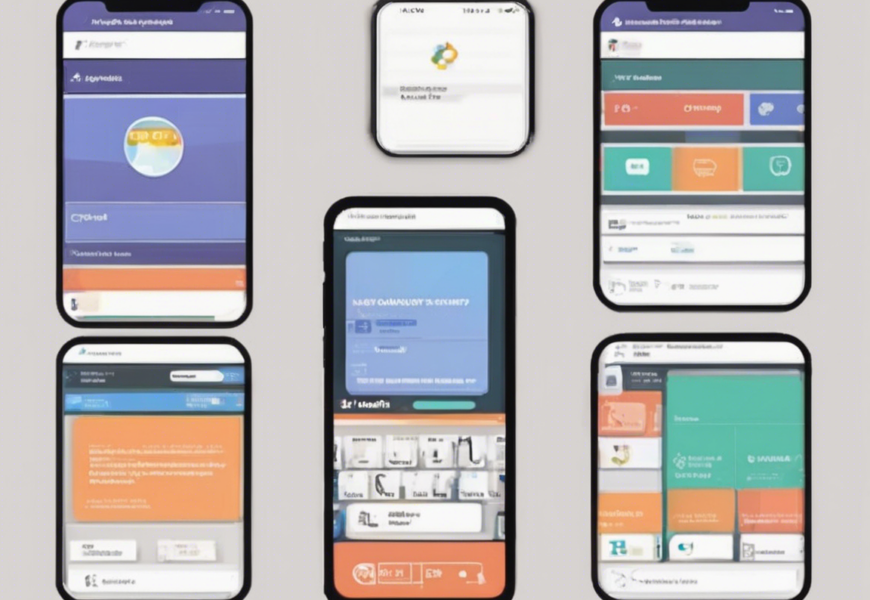In today’s digital age, creating your own app can be a fulfilling and potentially lucrative endeavor. Whether you have a great app idea that you believe can solve a problem or enhance people’s lives, or you simply want to dive into the world of app development, this comprehensive guide will walk you through the essential steps to bring your vision to life.
Getting Started
Before diving into the app development process, it’s crucial to define your app idea. What problem will your app solve? Who is your target audience? What platforms will your app be available on? Conduct thorough market research to understand the competitive landscape and ensure there is a demand for your app. Create a minimum viable product (MVP) to test your concept before investing significant time and resources.
Design and Planning
Wireframing and Prototyping
Start by creating wireframes to outline the layout and functionality of your app. Tools like Adobe XD, Sketch, or Figma can help you visualize the user interface. Prototyping allows you to test the user experience and gather feedback before moving on to development.
User Interface (UI) and User Experience (UX) Design
A visually appealing and intuitive UI/UX design is crucial for engaging users. Focus on simplicity, consistency, and usability to create a seamless app experience. Consider the color scheme, typography, and navigation elements to enhance user engagement.
Development
Choose Your Tech Stack
Selecting the right technology stack is essential for the success of your app. Consider factors such as the app’s complexity, scalability, and target platforms. Common tech stacks for mobile app development include React Native, Flutter, Swift, and Java.
Frontend and Backend Development
Frontend development focuses on creating the user interface and interactivity of the app, while backend development involves building the server-side logic and database. Collaborate with developers to ensure a seamless integration between the frontend and backend components of your app.
Testing and Quality Assurance
Testing is a crucial phase to identify and fix bugs, glitches, and performance issues in your app. Conduct functional testing, usability testing, and performance testing to ensure your app meets quality standards. Consider beta testing with a small group of users to gather feedback and make improvements.
Deployment and Marketing
Once your app is thoroughly tested and polished, it’s time to prepare for deployment. Submit your app to app stores such as the Apple App Store or Google Play Store. Create an app marketing strategy to generate buzz and attract users to download your app. Utilize app store optimization (ASO) techniques to improve visibility and rankings in app store search results.
Maintenance and Updates
Launching your app is just the beginning. To keep users engaged and satisfied, regularly update and maintain your app. Monitor user feedback, analyze app analytics, and implement new features to enhance user experience and retain loyal users.
Frequently Asked Questions (FAQs)
1. Do I need coding experience to create an app?
No, you don’t necessarily need coding experience to create an app. There are no-code and low-code app development platforms available that allow you to build apps using visual interfaces without writing code.
2. How long does it take to develop an app?
The development timeline for an app can vary depending on factors such as complexity, platform, features, and resources. Simple apps may take a few weeks to develop, while more complex apps can take several months or longer.
3. How much does it cost to create an app?
The cost of app development can vary widely depending on factors such as features, design, development complexity, and location of developers. A simple app may cost a few thousand dollars, while more complex apps can cost tens of thousands or more.
4. How do I monetize my app?
There are several monetization strategies for apps, including in-app purchases, subscriptions, advertising, and freemium models. Choose a strategy that aligns with your app’s purpose and target audience.
5. How do I protect my app idea?
To protect your app idea, consider patenting or copyrighting your app, or signing non-disclosure agreements (NDAs) with collaborators and developers. Conduct thorough research to ensure your idea is unique and has market potential.
Creating your own app can be a rewarding journey filled with challenges and opportunities for growth. By following the steps outlined in this guide and staying informed about the latest trends in app development, you can turn your app idea into a reality and make a meaningful impact in the digital world.



